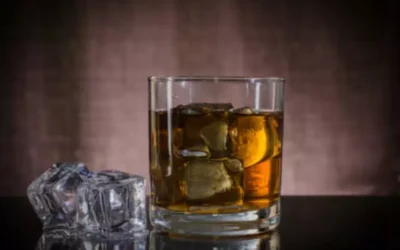We systematically searched MEDLINE, Embase, Cochrane Central Register of Controlled Trials (CENTRAL), and APA PsycArticles & PsycInfo via EBSCO Databases (published from inception to Apr. 2022). We do not know what factors relate to non-abstinent vs. abstinent recovery amongindividuals who define themselves as in recovery. In addition, no priorstudy has examined whether quality of life differs among those in abstinent vs.non-abstinent recovery in a sample that includes individuals who have attained longperiods of recovery.
Controlled drinking: more than just a controversy : Current Opinion in Psychiatry

Interventions based on harm reduction principles have decreased alcohol use in various student populations. Finally, Moderation Management is the only self-help program that supports non-abstinence goals, a feature that makes it popular with problem drinkers who are avoidant of traditional treatment services. The past decade has seen the AUD service field increasingly embrace the broadergoal of `recovery’ as its guiding vision. Donovan and colleagues(2005) reviewed https://ecosoberhouse.com/ 36 studies involving various aspects of QOL in relation to AUDand concluded that heavy episodic drinkers had worse QOL than other drinkers, that reduceddrinking was related to improved QOL among harmful drinkers, and that abstainers hadimproved QOL in treated samples (Donovan et al.2005). However, the NESARC QOL analyses examined transitions across AUD statusesover a three-year period, and thus inherently excluded individuals with more than threeyears of recovery.

Mental Health Treatment
A study conducted at the University of Gothenburg, Sweden found that the Reagans of the world are more successful in treatment than the Saras. The ranking probabilities and surface under the cumulative ranking curve (SUCRA) values are presented in Figure S8A–C and Table S8A–C for the three following outcomes. According to the predefined inclusion criteria, two authors (H.C.and S.W.) separately reviewed the list of papers retrieved through preliminarily screening titles and abstracts and full text with Endnote X7 to decide which could be included. Any controversial points were resolved with discussion after an independent review of the list of papers by another author (P.Z.).
- In addition, while controlled drinking becomes less likely the more severe the degree of alcoholism, other factors—such as age, values, and beliefs about oneself, one’s drinking, and the possibility of controlled drinking—also play a role, sometimes the dominant role, in determining successful outcome type.
- Finally, Moderation Management is the only self-help program that supports non-abstinence goals, a feature that makes it popular with problem drinkers who are avoidant of traditional treatment services.
- Do I want to give up completely, or do I want to be able to have a few drinks now and then.
History of Moderation Management
If a person tells themselves this every day, the number of days without a drink will soon add up. Before a person can successfully begin their recovery, a vital question to ask is what is my goal? Do I want to give up completely, or do I want to be able to have a few drinks now and then.
- Remember that every person’s journey is unique; there are no one-size-fits-all solutions for managing alcohol intake.
- In sum, research suggests that achieving and sustaining moderate substance use after treatment is feasible for between one-quarter to one-half of individuals with AUD when defining moderation as nonhazardous drinking.
- Indeed, a prominent harm reduction psychotherapist and researcher, Rothschild, argues that the harm reduction approach represents a “third wave of addiction treatment” which follows, and is replacing, the moral and disease models (Rothschild, 2015a).
- As a newer iteration of RP, Mindfulness-Based Relapse Prevention (MBRP) has a less extensive research base, though it has been tested in samples with a range of SUDs (e.g., Bowen et al., 2009; Bowen et al., 2014; Witkiewitz et al., 2014).
- Since drinking goal is a three-level variable, following the omnibus test, planned analyses were conducted to test differences between the three drinking goal groups for effects observed on all outcome variables.
- However, they do not elucidate patterns of non-disordered use over time, nor the likelihood of maintaining drug use without developing a DUD.
Expanding the continuum of substance use disorder treatment: Nonabstinence approaches
“It is essentially a practical approach; success is not measured by the achievement of an “ideal” drinking level or situation (i.e., abstention or low-risk levels), but by whether the introduction of the prevention measure reduces the chance that adverse consequences will occur” (NCBI). Multivariable stepwise regressions (Table2) show that younger individuals were significantly more likely to benon-abstinent, and movement to the next oldest age category reduced the odds ofnon-abstinence by an average of 27%. Importantly, controlled drinking vs abstinence the confidence intervals were narrow andextremely similar across models, implying that the effect of age was robust to modelspecification. In regard to help-seeking and problem severity, having attended at leastone 12-step meeting and the number of DSM-IV dependence symptoms were both significantlyrelated to non-abstinence. In the fully saturated models, any twelve-step attendancedecreased odds of non-abstinence by 57–76% (Model 4), while each additional DSMsymptom decreased odds of non-abstinence by 73–89% (Model 4).
- We identify a clear gap in research examining nonabstinence psychosocial treatment for drug use disorders and suggest that increased research attention on these interventions represents the logical next step for the field.
- Several factors influence this decision, including societal perception, cultural factors, psychological impact, and health implications.
- In addition to shaping mainstream addiction treatment, the abstinence-only 12-Step model also had an indelible effect on the field of SUD treatment research.
- If supported in future studies, these results could be used to inform treatment planning for patients with alcoholism.
- Ultimately, nonabstinence treatments may overlap significantly with abstinence-focused treatment models.
Study Characteristics
Addiction Treatment at FHE Health
Drinking alcohol: Health experts on risks and supposed benefits – NBC News
Drinking alcohol: Health experts on risks and supposed benefits.
Posted: Sat, 12 Aug 2023 07:00:00 GMT [source]